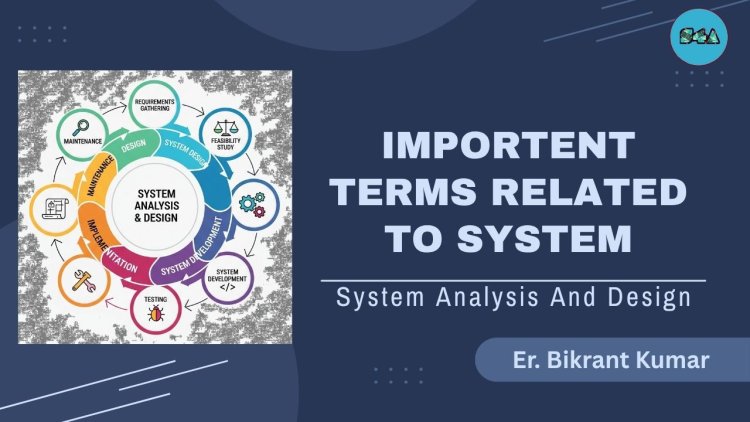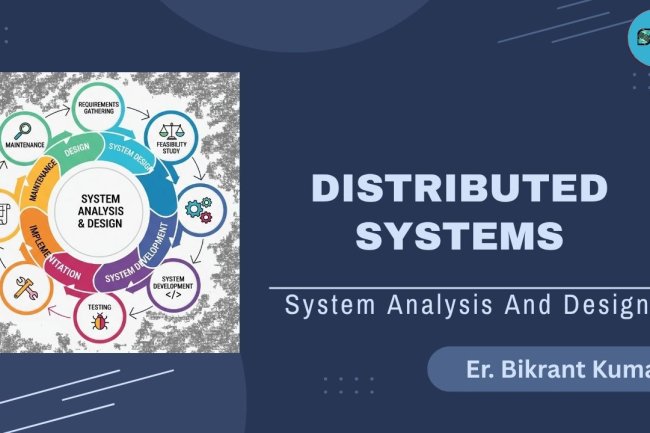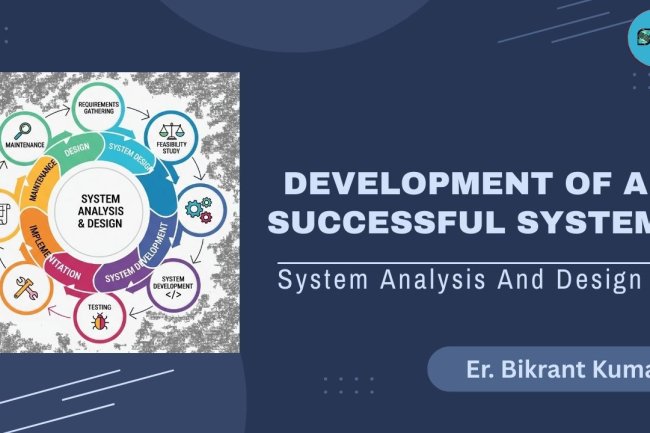Important Terms Related to System
SAD is a process for analyzing an organization's needs and designing new information systems to meet them.

System
Definition:
A system is a set of interrelated components working together to achieve a specific goal.
Example:
A School System includes students, teachers, exams, and administration — all working together for education.
Subsystem
Definition:
A subsystem is a smaller part of a system that performs a specific function within the overall system.
Example:
In a School System:
- Examination subsystem
- Library subsystem
- Attendance subsystem
Each one handles a specific task.
Boundary
Definition:
The boundary defines what is inside the system and what is outside — i.e., the limits of the system.
Example:
In a payroll system, employee salary processing is inside the system, but government tax rules are outside.
Environment
Definition:
The environment refers to anything external that interacts with the system.
Example:
In a railway reservation system:
- Users
- Bank servers
- Train database
All are part of the environment.
Interface
Definition:
An interface is a point where the system interacts with its environment or subsystems.
Example:
- A mobile app UI is an interface between the user and the booking system.
- The keyboard/mouse is an interface between you and the computer.
Input
Definition:
An input is any data or information that is entered into the system to be processed.
Example:
In an online exam system:
- Student ID
- Password
- Answers
are all inputs.
Output
Definition:
The output is the result produced by the system after processing inputs.
Example:
In an online exam system:
- Marks
- Grades
- Pass/Fail report
are the outputs.
Process
Definition:
A process is the operation that transforms input into output.
Example:
In a billing system:
- Adding items to a cart
- Calculating total
- Applying tax
All are processes.
Feedback
Definition:
Feedback is the output that is sent back into the system to improve future performance.
Example:
In an e-learning app:
- Student feedback on a lesson can help redesign the content.
Control
Definition:
Control to rules, procedures, or mechanisms to guide the system.
Example:
In ATM software:
- You can’t withdraw more than ₹20,000 per day (a control rule).
System Flow
Definition:
System flow describes the movement of data and control through the system.
Example:
In a banking system:
- Customer enters ATM PIN
- System checks balance
- If valid → proceeds to withdrawal
This is the flow of data and decision.
System Analyst
Definition:
A System Analyst is a person who studies the system, gathers requirements, and helps design it.
Example:
If a college wants an ERP system, the system analyst interviews staff, students, and IT to build the right solution.
System Design
Definition:
System design is the process of defining architecture, modules, interfaces, and data for a system.
Example:
In a hospital management system:
- Patient module
- Doctor module
- Billing module
All are part of system design.
Data Flow Diagram (DFD)
Definition:
A DFD shows how data moves through a system — what data comes in, how it’s processed, and what goes out.
Example:
In a Student Result System:
- Input: Marks
- Process: Calculate Total & Grade
- Output: Report Card
All shown using DFD.
Entity
Definition:
An entity is a person, place, object, or event about which data is collected.
Example:
In a school system:
- Student
- Teacher
- Subject
are all entities.
Data Dictionary
Definition:
A data dictionary defines all data elements used in the system (name, type, format, size).
Example:
|
Field |
Type |
Description |
|
Student_ID |
Number |
Unique student code |
|
Name |
Text |
Full student name |
|
Date_of_Birth |
Date |
DOB of student |
------------------------------
Files
What's Your Reaction?















